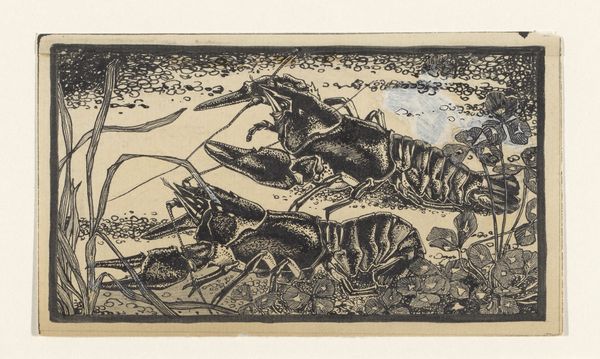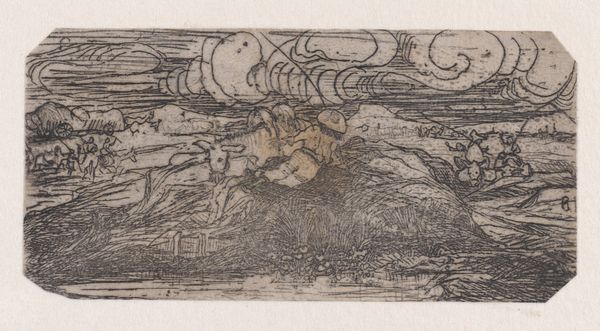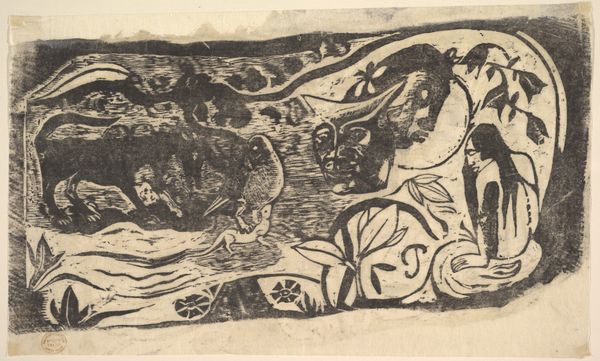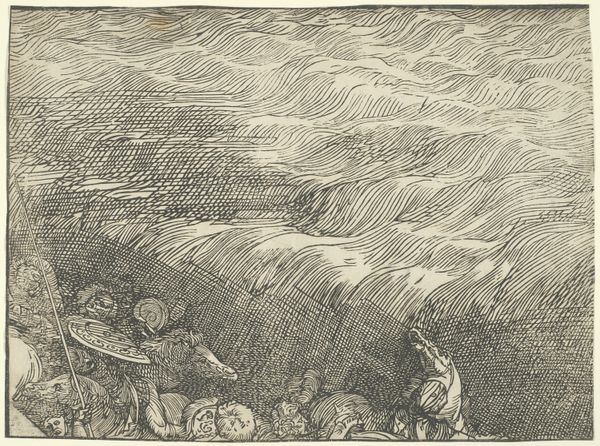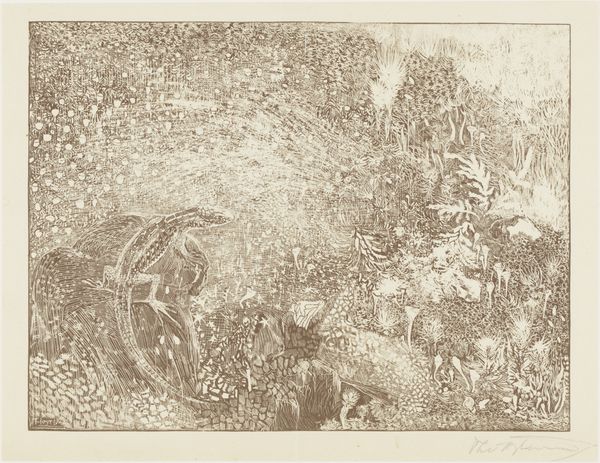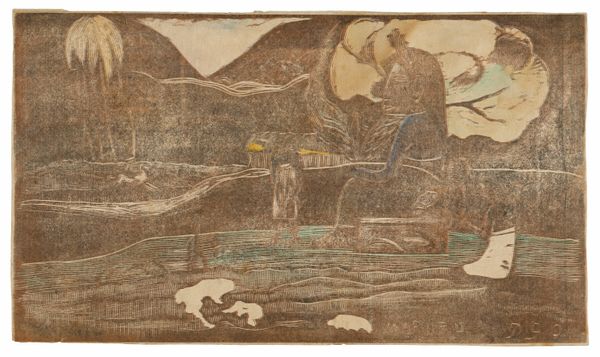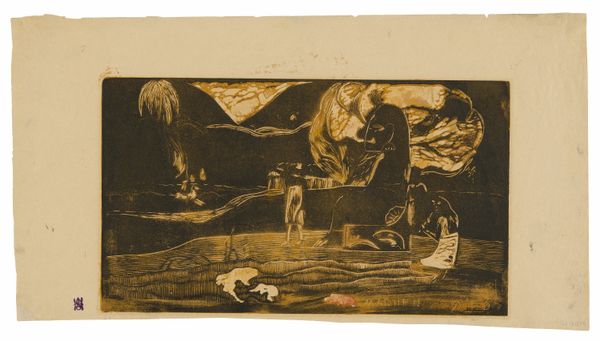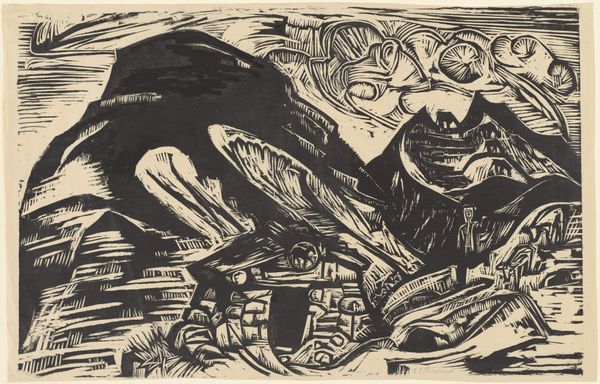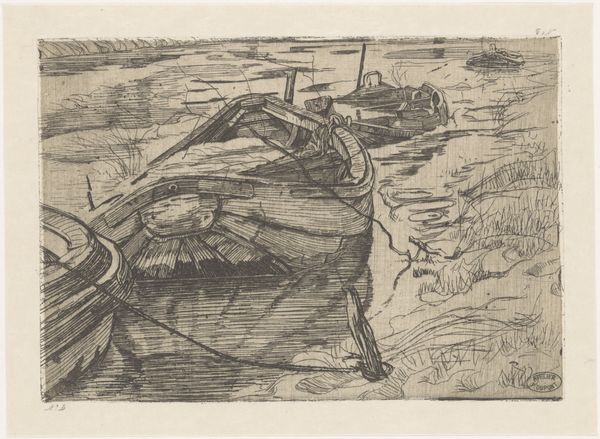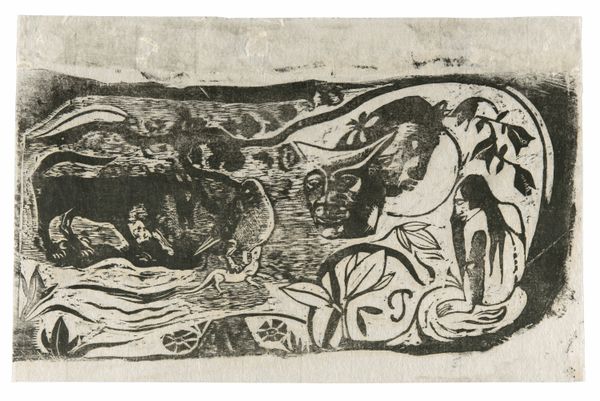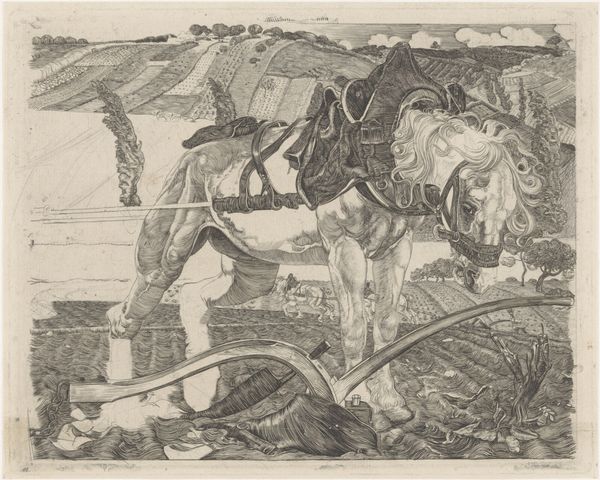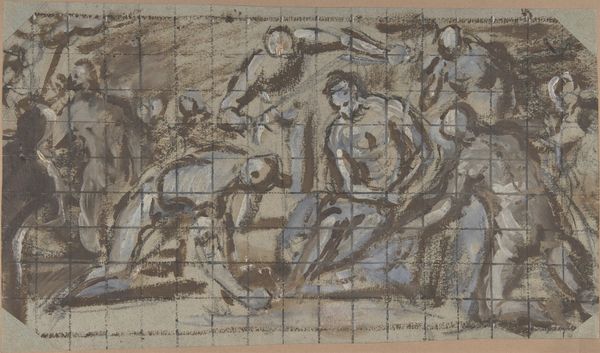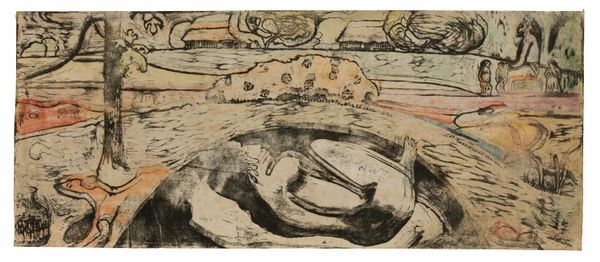
Dimensions: 8 1/8 x 14 1/8 in. (20.6 x 35.9 cm): block 10 13/16 x 18 1/2 in. (27.5 x 47 cm): paper
Copyright: Public Domain
This is Paul Gauguin's woodcut, Auti Te Pape, made during his first trip to Tahiti in the 1890s. Gauguin sought an untouched paradise, but instead found an island already influenced by colonialism. Here, Gauguin wrestles with the complexities of cross-cultural representation. The Tahitian woman is presented in a state of reverie by the water's edge, yet Gauguin's gaze is that of a European male artist, shaping her image through his own cultural lens. This print reveals the artist's romanticization of the 'exotic' alongside a negotiation of his own identity as a Western artist engaging with a non-Western culture. It is in this tension that Gauguin's work becomes a site of cultural exchange, however fraught. "It is not advisable to paint from nature,” Gauguin once said. "Art is an abstraction." Gauguin’s process of abstraction and his subjective lens asks us to consider the power dynamics inherent in cultural representation, reminding us of the complexities and responsibilities that come with artistic interpretation.
Comments
No comments
Be the first to comment and join the conversation on the ultimate creative platform.
